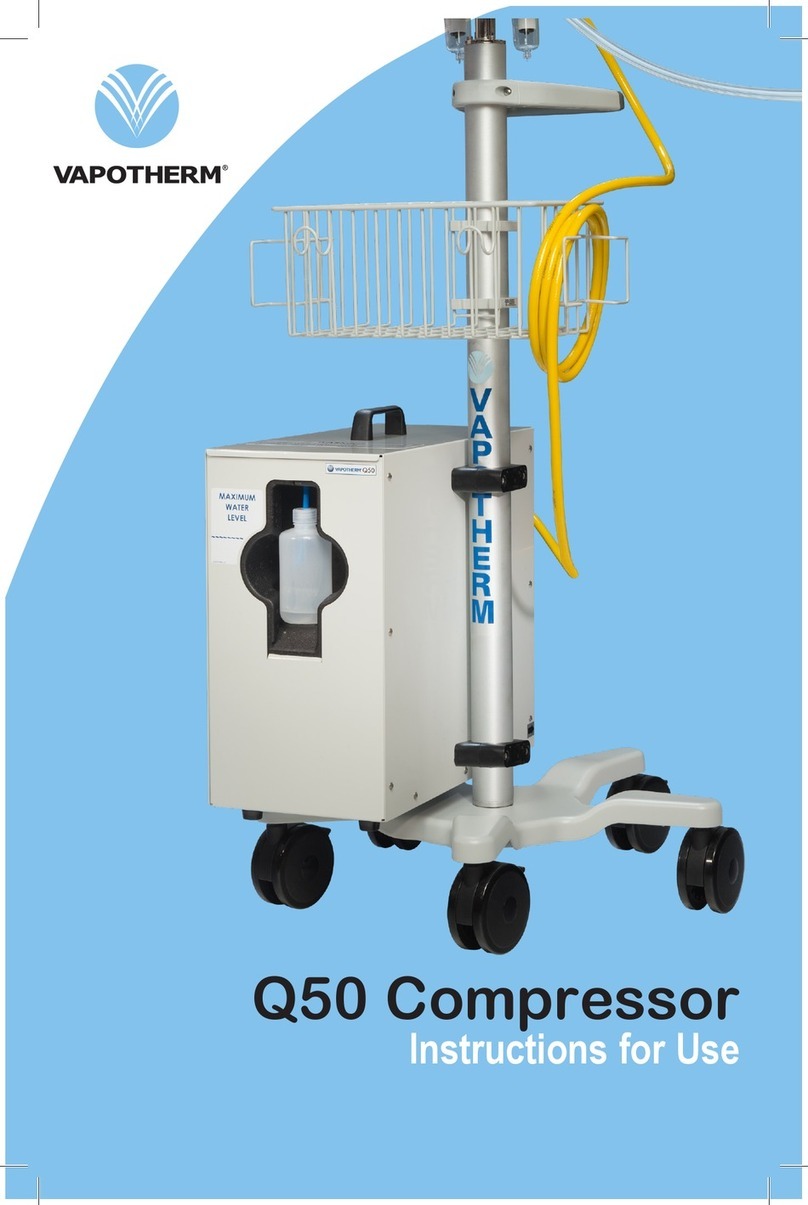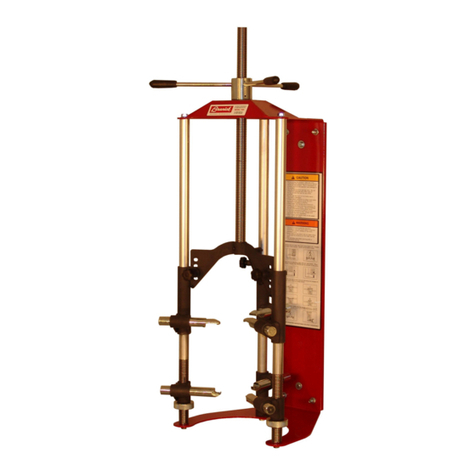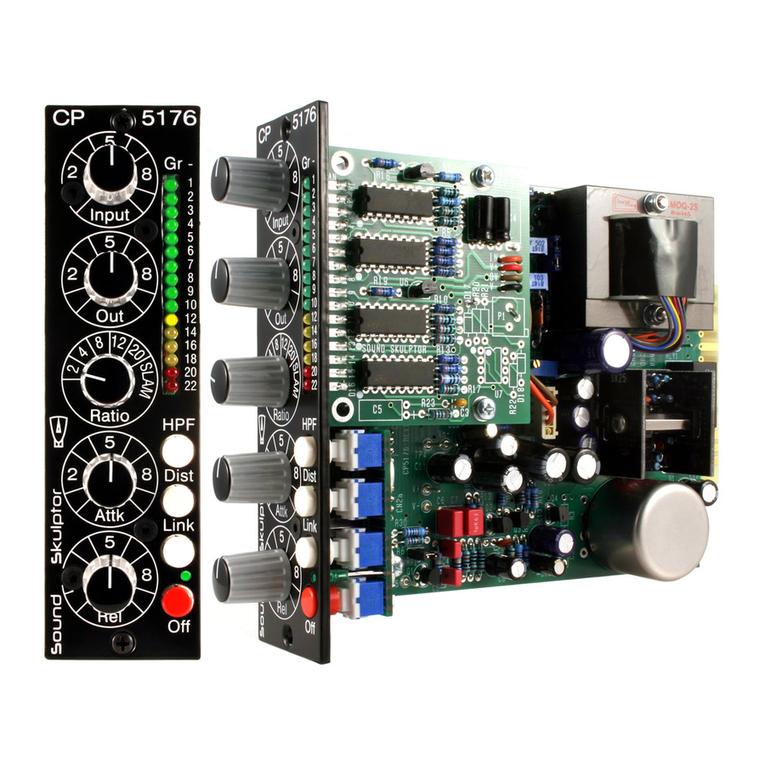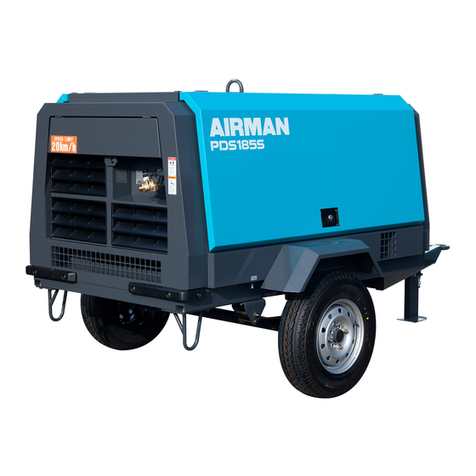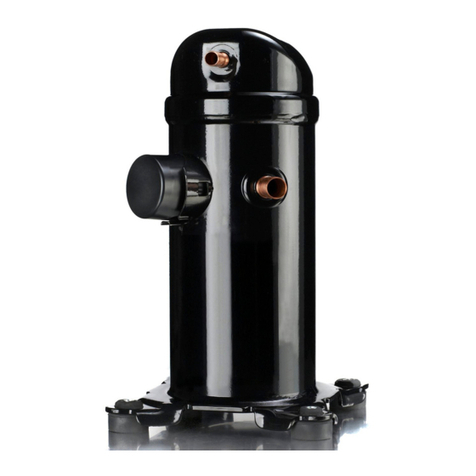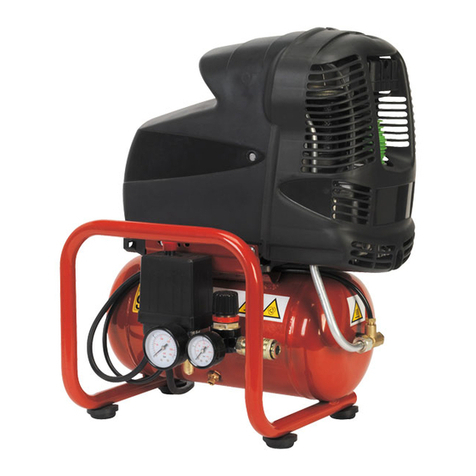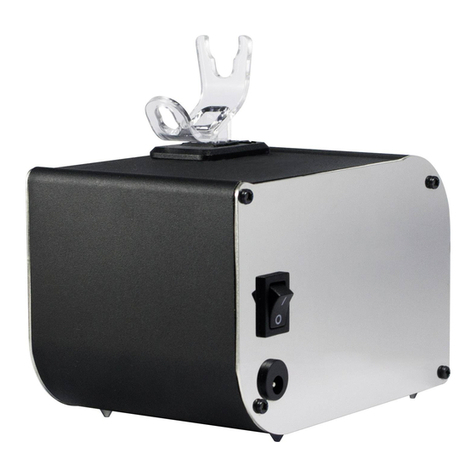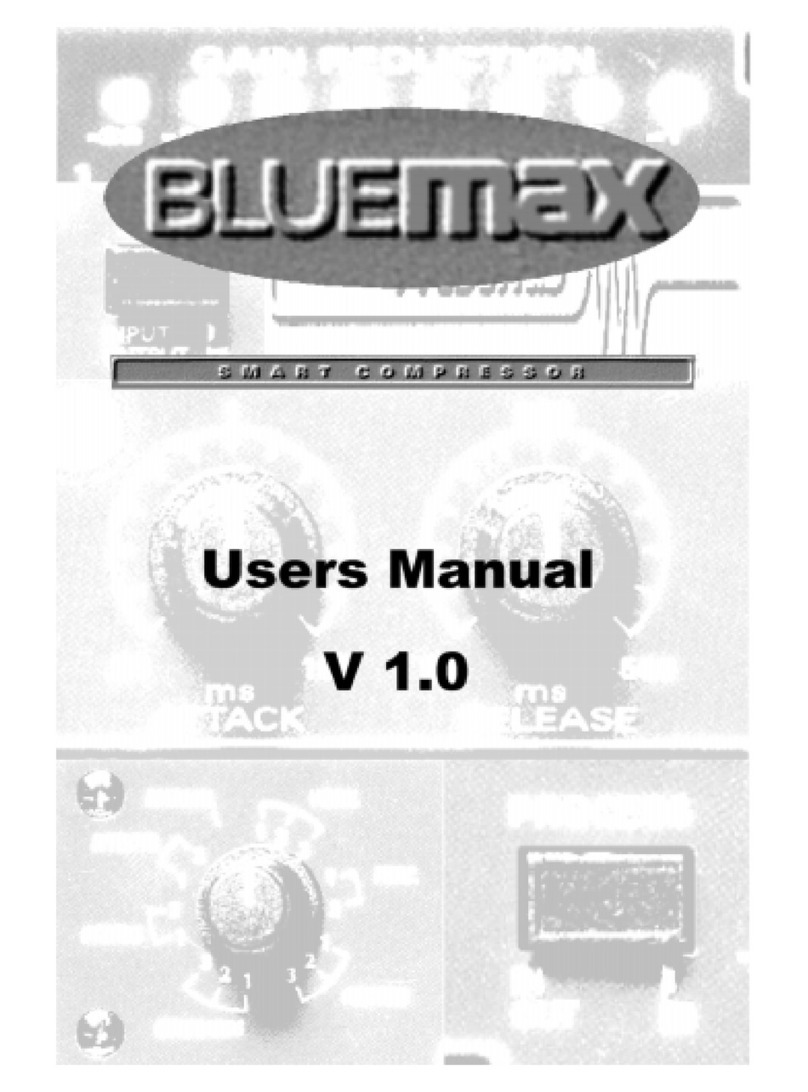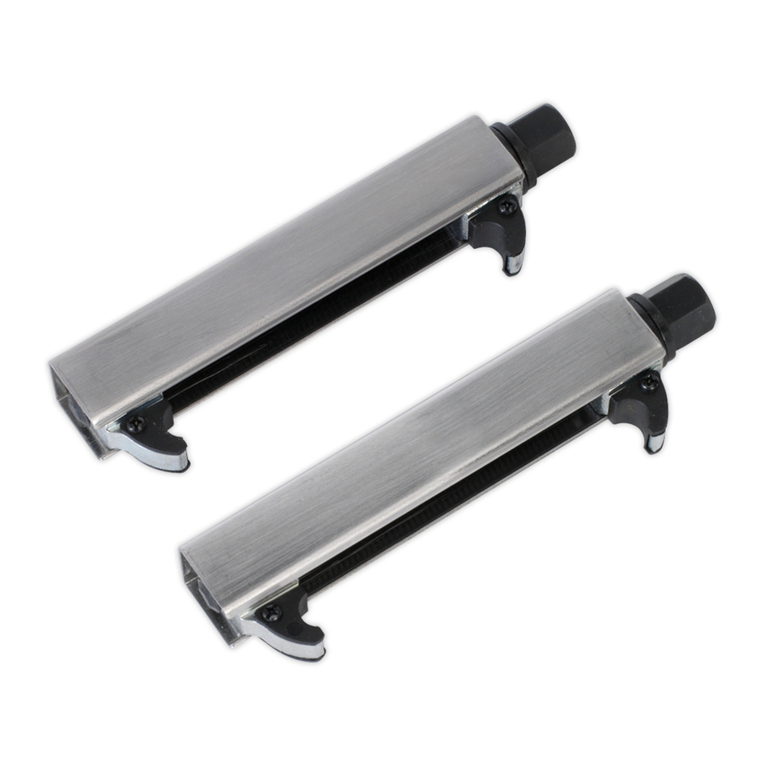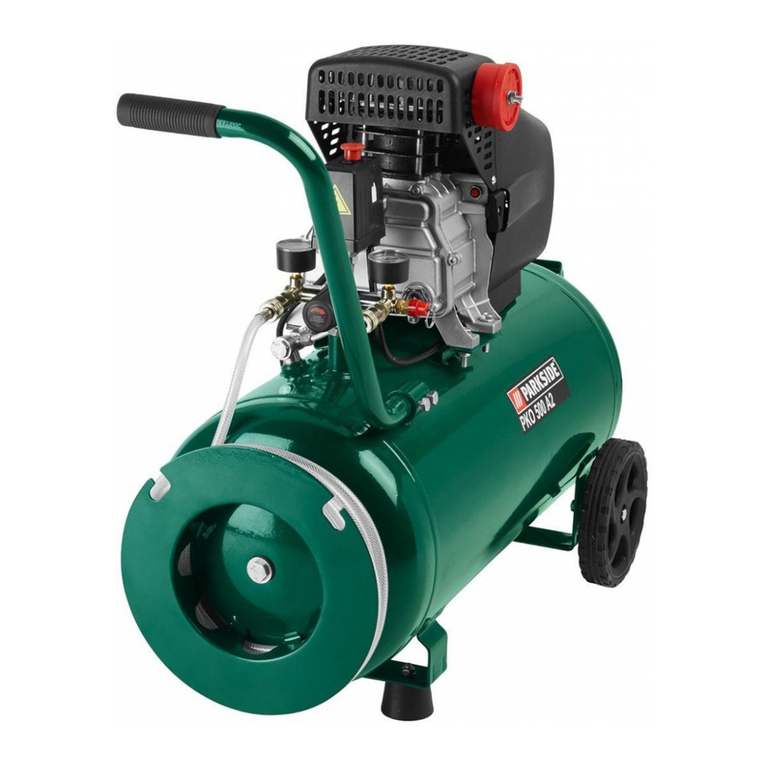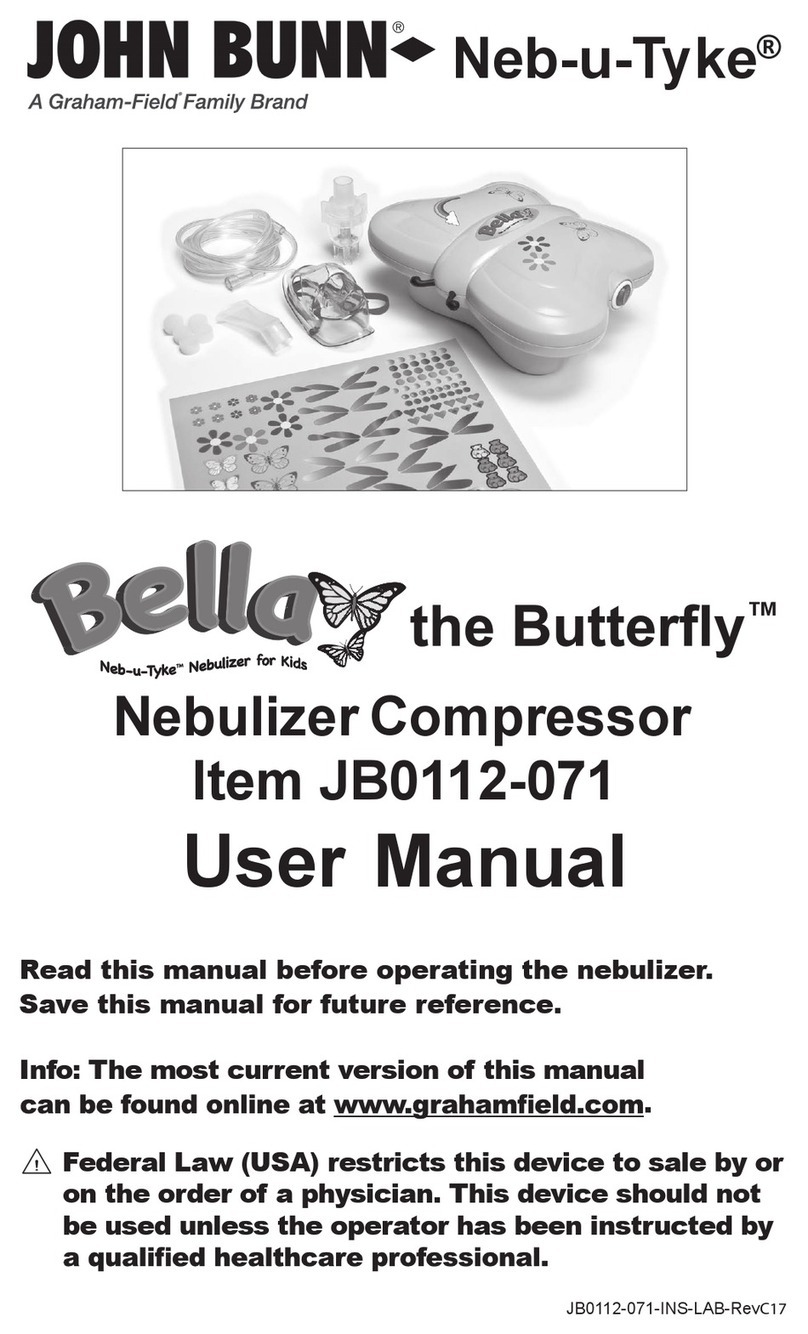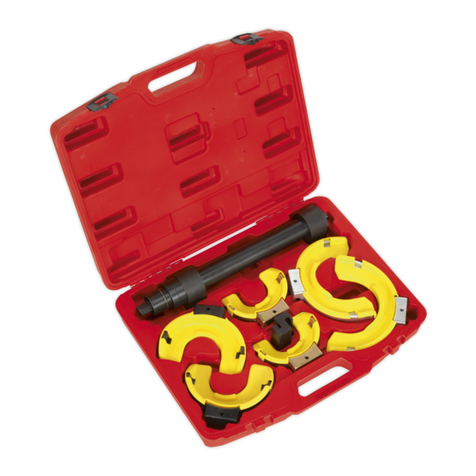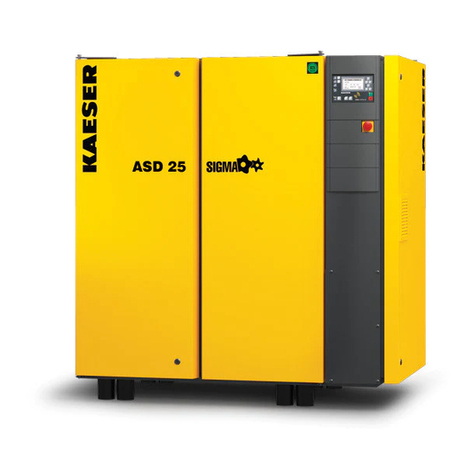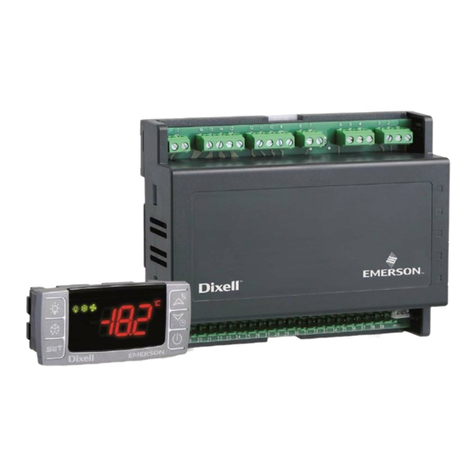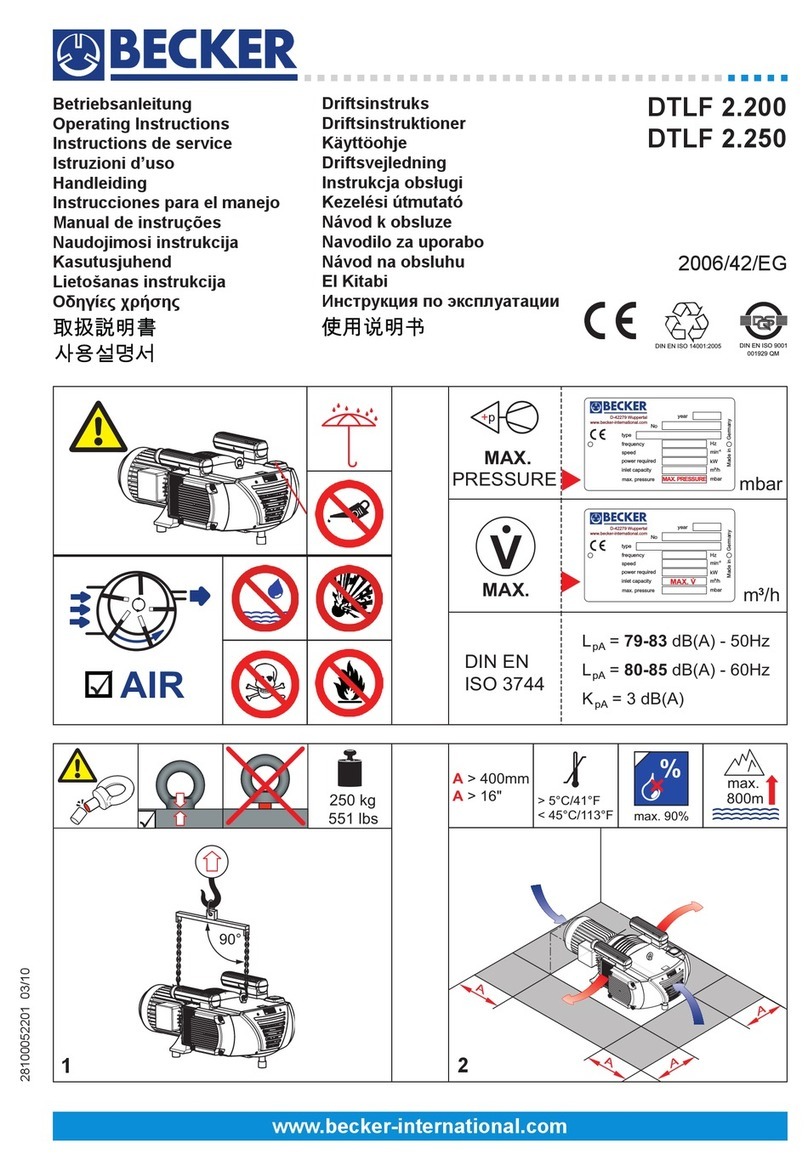Tecumseh AEA4440YXA Product guide

Service Data Book
Sold By
American Refrigeration Supplies Inc.
Wholesale Distribution
North America

A LOOK AT SERVICE SAFETY
Genera Service Safety Precautions
1
1
GENERAL SERVICE
SAFETY PRECAUTIONS
I.
Introduction . . . . . . . . . . . . . . . . . . . . . . . . 2
II.
Trained Personnel Only . . . . . . . . . . . . . . 2
III.
Terminal Venting and Electrocution . . . . . 2
IV.
Refrigerants and Other Chemicals. . . . . . . 4
V.
Compressor Remo al . . . . . . . . . . . . . . . . 4
VI.
System Flushing, Purging, and Pressure
Testing for Leaks . . . . . . . . . . . . . . . . . . . . 4
VII.
System Charging . . . . . . . . . . . . . . . . . . . . 5
VIII.
Pre ention of Water-Utilizing System
Explosions . . . . . . . . . . . . . . . . . . . . . . . . . 6
IX.
Start Capacitor O erheating. . . . . . . . . . . . 7
X.
System E acuation . . . . . . . . . . . . . . . . . . 7
XI.
Follow the Labels . . . . . . . . . . . . . . . . . . . 7

2
Chapter 1
I.
Introduction
In the interest of promoting safety in the refrigera-
tion and air conditioning industry, Tecumseh Prod-
ucts Company has prepared the following
information to assist service personnel in safely
installing and servicing equipment. This section
covers a number of topics related to safety. However,
it is not designed to be comprehensive or to replace
the training required for professional service person-
nel.
II.
Trained Personne On y
Refrigeration and air conditioning devices are
extremely complicated by nature. Servicing, repair-
ing, and troubleshooting these products should be
done only by those with the necessary knowledge,
training, and equipment.
III.
Termina Venting and
E ectrocution
Improperly servicing, repairing, or
troubleshooting a compressor can lead
to electrocution or fire due to terminal
venting with ignition. Follow the pre-
cautions below to avoid serious injury
or death from electrocution or terminal
venting with ignition.
A.
Fire Hazard from Termina
Venting with Ignition
Oil and refrigerant can spray out of the compressor
if one of the terminal pins is ejected from the her-
metic terminal. This “terminal venting” can occur as
a result of a ground fault (also known as a short cir-
cuit to ground) in the compressor. The oil and
refrigerant spray from terminal venting can be
ignited by electricity and produce flames that can
lead to serious burns or death. When spray from ter-
minal venting is ignited this is called “terminal vent-
ing with ignition.” See Figures 1-1 through 1-3 for
detail.
B.
Termina Venting and E ectrocution
Precautions
To reduce the risk of electrocution, serious burns, or
death from terminal venting with ignition:
➤
Disconnect ALL electrical power before
removing the protective terminal cover.
Make sure that all power legs are open.
(NOTE: The system may have more than one
power supply.)
➤
Never energize the system unless: 1) the pro-
tective terminal cover is securely fastened,
and 2) the compressor is properly connected
to ground.
Figures 1-4 through 1-6 illustrate the different
means of fastening protective terminal covers.
➤
Never reset a breaker or replace a fuse with-
out first checking for a ground fault (a short
circuit to ground).
An open fuse or tripped circuit breaker is a
strong indication of a ground fault. To check
for a ground fault, use the procedure outlined
in “Identifying Compressor Electrical
Problems” on page 47.
➤
Be alert for sounds of arcing (sizzling, sput-
tering or popping) inside the compressor. If
you hear these sounds, IMMEDIATELY get
away.
➤
Disconnect power before servicing.
Always disconnect power before servicing,
unless it is required for a specific
troubleshooting technique. In these situations,
use extreme caution to avoid electric shock.
WARNING
!
Never service, repair, or troubleshoot
unless you are a professional air condi-
tioning/refrigeration service person.
Improper servicing can lead to serious
injury or death from fire, electric shock,
or explosion.

A LOOK AT SERVICE SAFETY
Genera Service Safety Precautions
3
Figure 1-1.
Compressor with (1) protecti e
terminal co er and (2) bale strap
remo ed to show (3) hermetic
terminal.
Figure 1-2.
Close-up iew of hermetic
terminal showing indi idual
terminal pins with power leads
remo ed.
Figure 1-3.
Close-up iew of hermetic terminal
after it has ented.
Figure 1-4.
Compressor with (1) protecti e
terminal co er held in place by (2)
metal bale strap.
Figure 1-5.
Compressor with (1) protecti e
terminal co er held in place by (2)
nut.
Figure 1-6.
Compressor with (1) snap-in
protecti e terminal co er.

4
Chapter 1
IV.
Refrigerants and Other
Chemica s
Contact with refrigerant, mixtures of refrigerant and
oil, or other chemicals can cause a variety of injuries
including burns and frostbite. For example, if refrig-
erant contacts skin or eyes it can cause severe frost-
bite. Also, in the event of a compressor motor
failure, some refrigerant and oil mixtures can be
acidic and cause chemical burns.
To avoid injury, wear appropriate protective eye-
wear, gloves, and clothing when servicing an air con-
ditioning or refrigeration system. Refer to your
refrigerant supplier for more information.
If refrigerant or mixtures of refrigerant and oil come
in contact with skin or eyes, flush the exposed area
with water and get medical attention immediately.
V.
Compressor Remova
Failure to properly remove the compressor can result
in serious injury or death from electrocution, fire, or
sudden release of refrigerant and oil.
Follow these precautions when removing a compres-
sor from a system:
➤
Disconnect ALL electrical power.
Disconnect all electrical power supplies to the
system, making sure that all power legs are
open. (NOTE: The system may have more
than one power supply.)
➤
Be sure refrigerant is recovered before
removing compressor.
Attempting to remove the compressor before
removing all refrigerant from the system can
cause a sudden release of refrigerant and oil.
Among other things, this can:
•Cause a variety of injuries including
burns and frostbite.
•Cause a fire if a torch is used to discon-
nect tubing.
•Expose the service person to toxic gas.
To avoid serious injury or death, be sure to
remove and recover all refrigerant before
removing the compressor.
➤
Use a tubing cutter, not a torch.
Use a tubing cutter to remove the
compressor. A torch can cause
even trace amounts of refrigerant
to decompose and release toxic
fumes. In addition, using a torch
to remove the compressor can cause a fire. If
you ignore this recommendation and use a
torch, be prepared to extinguish a fire.
VI.
System F ushing, Purging,
and Pressure Testing for
Leaks
Failure to properly flush, purge, or pressure test a
system for leaks can result in serious injury or death
from explosion, fire, or contact with acid-saturated
refrigerant or oil mists.
Follow these precautions when flushing/purging a
system or pressure testing a system for leaks:
➤
Use flushing products according to the man-
ufacturer’s instructions.
➤
To purge a system, use only dry nitrogen.
➤
When pressure testing for leaks, use only
regulated dry nitrogen or dry nitrogen plus
trace amounts of the serial label refrigerant.
➤
When purging or pressure testing any refrig-
eration or air conditioning system for leaks,
never use air, oxygen or acetylene.
•Oxygen can explode on contact with oil.
•Acetylene can decompose and explode
when exposed to pressures greater than
approximately 15 PSIG.
•Combining an oxidizing gas, such as oxy-
gen or air, with an HCFC or HFC refrig-
erant under pressure can result in a fire or
explosion.

A LOOK AT SERVICE SAFETY
Genera Service Safety Precautions
5
➤
Use a pressure regulating valve and pressure
gauges.
Commercial cylinders of nitrogen contain
pressures in excess of 2000 PSIG at 70°F. At
pressures much lower than 2000 PSIG, com-
pressors can explode and cause serious injury
or death.To avoid overpressurizing the system,
always use a pressure regulating valve on the
nitrogen cylinder discharge (see Figure 1-7).
The pressure regulator must be able to reduce
the pressure down to 1 or 2 PSIG and main-
tain this pressure.
The regulating valve must be equipped with
two pressure gauges:
•one gauge to measure cylinder pressure,
and
•one gauge to measure discharge or down-
stream pressure.
➤
Use a pressure relief valve.
In addition to a pressure regulating valve and
gauges, always install a pressure relief valve.
This can also be a frangible disc type pressure
relief device. This device should have a dis-
charge port of at least 1/2” MPT size. The
valve or frangible disc device must be set to
release at 175 PSIG (see Figure 1-7).
➤
Do not pressurize the system beyond 150
PSIG field leak test pressure.
When field testing a system for leaks, 150
PSIG is adequate test pressure.
➤
Disconnect nitrogen cylinder and evacuate
the system before connecting the refrigerant
container.
Disconnect the nitrogen cylinder and release
the pressure in the system before connecting a
refrigerant container to the system. The higher
pressure gas in the system can explode the
refrigerant container.
VII.
System Charging
Failure to properly charge the system can result in
serious injury or death from explosion or fire.
Follow these precautions when charging a system:
➤
Do not operate the compressor without
charge in the system.
Operating the compressor without a charge in
the system can damage the hermetic terminal.
As always, to avoid serious injury or death
from terminal venting with ignition, never
energize the compressor unless the protective
terminal cover is securely fastened.
➤
Use proper refrigerant.
Use only the serial label refrigerant when
charging the system. Using a different refriger-
ant can lead to excess system pressure and an
explosion. Use of a refrigerant other than the
serial label refrigerant will void the compressor
warranty.
➤
Do not overcharge a refrigeration or air con-
ditioning system.
Overcharging a refrigeration or air condition-
ing system can result in an explosion. To avoid
serious injury or death, never overcharge the
system. Always use proper charging tech-
niques. Limit charge amounts to those speci-
fied on the system equipment serial label or in
Figure 1-7.
Dry nitrogen cylinder with attached
pressure regulating and relief al es and
pressure gauges needed for pressure
testing for leaks and purging.
Regulating
Val e
Gauges
To System
Relief Val e
175 PSIG Setting

6
Chapter 1
the original equipment manufacturer’s service
information.
Overcharging the system immerses the com-
pressor motor, piston, connecting rods, and
cylinders in liquid refrigerant. This creates a
hydraulic block preventing the compressor
from starting. The hydraulic block is also
known as locked rotor.
Continued supply of electricity to the system
causes heat to build in the compressor. This
heat will eventually vaporize the refrigerant
and rapidly increase system pressure. If, for
any reason, the thermal protector fails to open
the electrical circuit, system pressure can rise
to high enough levels to cause a compressor
housing explosion.
VIII.
Prevention of Water-Uti izing
System Exp osions
In certain water-utilizing refrigeration systems,
water can leak into the refrigerant side of the system.
This can lead to an explosion of system compo-
nents, including but not limited to, the compressor.
If such an explosion occurs, the resulting blast can
kill or seriously injure anyone in the vicinity.
A.
Systems at Risk of Exp osion
Water-utilizing systems that have single-wall heat
exchangers may present a risk of explosion. Such
systems may include:
•water source heat pump/air conditioning sys-
tems, and
•water cooling systems, such as icemakers, water
coolers, and juice dispensers.
Water-utilizing systems that have single-wall heat
exchangers present a risk of explosion unless they
have either:
•a high pressure cut-out which interrupts power
to ALL leads to the compressor, or
•an external pressure relief valve.
B.
How an Exp osion Occurs
If the refrigerant tubing in the heat exchanger devel-
ops a leak, water can enter the refrigerant side of the
system. Water entering the refrigerant side can come
in contact with live electrical connections in the
compressor causing a short circuit or a path to
ground. When this occurs, extremely high tempera-
tures can result. The heat build-up creates steam
vapor that can cause excessive pressure throughout
the entire system. This system pressure can lead to
an explosion of the compressor or other system
components.
C.
Service Procedures
In light of the risk of explosion, be especially alert
for signs of water leaking into the refrigerant side of
the system. Whenever servicing or troubleshooting a
water-utilizing system, always check to see if it has
either a pressure relief valve or a high pressure cut-
out as previously described. If the system does not
have at least one of these, DISCONNECT ALL
ELECTRICAL POWER and look for indications
that water has leaked into the refrigerant side of the
system. These indications may include:
•Observation of or a report of a blown fuse or
tripped circuit breaker.
•Signs that water has leaked to the outside of the
system.
•Reports that the system has made gurgling or
percolating noises.
•A history of loss of refrigerant charge without a
leak being found in the system. NOTE: Com-
mon leak detection methods will not detect a
water-to-refrigerant leak in the system’s heat
exchanger(s).
•Observation of or a report of the compressor
giving off an unusual amount of heat.
If ANY of these indications are present, do the fol-
lowing checks to determine if water has leaked into
the refrigerant side:
Step 1:
Check for a Ground Fau t (a Short to
Ground).
Check the compressor for a ground fault (also
known as a short circuit to ground) using the proce-
dure outlined in “Identifying Compressor Electrical
Problems” on page 47.

A LOOK AT SERVICE SAFETY
Genera Service Safety Precautions
7
•If a ground fault does not exist, go to Step 2.
•If a ground fault does exist, keep the power off.
WARNING! To avoid electric shock, electro-
cution and terminal venting with ignition, do
not energize a compressor that has a ground
fault. Mark and red tag the compressor to indi-
cate that there is a ground fault. Do not recon-
nect the power leads. Tape and insulate each
power lead separately. Proceed to Step 2. Do
not replace the compressor or energize the sys-
tem before performing Step 2.
Step 2:
Check for Water in the System
Once the compressor is cool to the touch, open the
system process valve slightly to see if any water
comes out of the system. WARNING! Opening the
system process valve while the compressor is hot
can cause severe burns from steam coming out of
the valve.
If ANY water comes out of the process valve, the
entire system must be replaced. See “D. Replacing a
Single-Wall Water-Utilizing System”.
If water does not come out of the process valve,
there is still a possibility that some water has leaked
into the refrigerant side of the system. To address
this possibility, determine if the system has a history
of losing refrigerant charge without a leak being
found or repaired.
If you find ANY indication of a history of losing
refrigerant charge without detection of a leak, this is
a sign that refrigerant has leaked in the water inside
the heat exchanger. The entire system must be
replaced. See “D. Replacing a Single-Wall Water-
Utilizing System”.
If you do not find any indication of a history of loss
of charge without detection of a leak, you still need
to install:
•a high-pressure cut-out which interrupts power
to ALL leads to the compressor, or
•an external pressure relief valve.
Also, if you found a ground fault in the compressor
in Step 1, replace the compressor before applying
power to the system.
D.
Rep acing a Sing e-Wa Water-Uti izing
System
When replacing a single-wall water-utilizing system,
replace the system with one that has:
•a double-wall heat exchanger(s), or
•a high-pressure cut-out which interrupts power
to ALL leads to the compressor, or
•an external pressure relief valve.
IX.
Start Capacitor Overheating
An overheated start capacitor can burst and spray or
splatter hot material which can cause burns. Apply-
ing voltage to a start capacitor for more than a few
seconds can cause the capacitor to overheat.
Check capacitors with a capacitance meter, and
never check a capacitor with the power on.
X.
System Evacuation
Never use a compressor to evacuate a system.
Instead, use a high vacuum pump specifically
designed for that purpose.
Never start the compressor while it is under deep
vacuum. Always break a vacuum with refrigerant
charge before energizing the compressor.
Failure to follow these instructions can damage the
hermetic terminal. As always, to avoid serious injury
or death from terminal venting with ignition, never
energize the compressor unless the protective termi-
nal cover is securely fastened.
XI.
Fo ow the Labe s
Tecumseh Products Company compressors have
labels and markings with important information.
For your safety and the safety of others, read the
labels and markings on the product.

A LOOK AT SERVICE SAFETY
9
2
MODEL AND
APPLICATION
INFORMATION
I.
Compressor Model Number Codes . . . . .10
II.
Condensing Unit Model Number Codes. .11
III.
Serial Label Information . . . . . . . . . . . . . .12
IV.
Basic Application Information for
Hermetic Compressors . . . . . . . . . . . . . .14

10
Chapter 2
I.
Compressor Mode Number Codes
Figure 2-1.
Compressor model number codes.
AE XAA44 Y40
Compressor
Family
XC
Condensing
Units
Release
Variant
(Generation)
Number of
Digits In Rated
BTU Capacity
First Two
Digits of Rated
BTU Capacity
Application Refrigerant Voltage
AE
AG
AH
AJ
AK
AN
AV
AW
AZ
RG
RK
SA
SF
TP
A = 1st
B = 2nd
C = 3rd
Etc.
Primary Application Parameters
E ap. Temperature
1. Low
2. Low
3. High
4. High
5. Air Cond.*
6. Medium
7. Medium
8. Air Cond.
9. Commercial
0. Commercial
A. Medium/Low
*Application "5" compressors when applied to condensing
units become application "4" in the unit's model number.
Motor Starting Torque
Normal
High
Normal
High
Normal
Normal
High
Normal
High
Normal
Normal
Rating Pt.
-10°F
-10°F
+45°F
+45°F
+45°F
+20°F
+20°F
+49°F
+20°F
+20°F
+20°F
Primary
Refrigerants
A=R12
B=R410A
C=R407C
E=R22
J=R502
Y=R134a
Z=R404A/R507
XA=115-60-1; 100-50-1
XB=230-60-1; 200-50-1
XC=220-240-50-1
XD=208-230-60-1; 200-50-1
XF=208-230-60-3; 200-240-50-3
XG=460-60-3; 380-420-50-3
XH=575-60-3; 480-520-50-3
XN=208-230-60-1; 200-220-50-1
XP=220-60-1; 200-50-1
XT=200-230-60-3; 200-220-50-3
XU=100-60-1; 100-50-1
XV=265-60-1
AB=115-60-1; 90-50-1
Voltage Codes
See unit information
on next page.
In this example (4) total digits, with
the first two (40), or 4,000 BTU capacity.
Note: For explanations of
oltages not listed, contact
Tecumseh Products Company.

A LOOK AT SERVICE SAFETY
Mode and App ication Information
11
II.
Condensing Unit Mode Number Codes
Figure 2-2.
Condensing unit model number codes.
AEA4440YXA XC
A Standard Unit
B Std. Unit w/Recei er Tank
C Std. Unit w/Tank & BX Cable
D Std. Unit w/BX Cable
E,F,K Physical Design Variant (Conduit)
G,H,J,L,P Physical Design Variant (Standard)
M Ad anced Commercial Design
N Ad anced Commercial Design
S Customer Special
T Interconnect Compressor
U Water Cooled — Ad . Commercial Design
V Electrical Special (Conduit Design)
W Water Cooled Unit
X Interconnect Unit
Y Air Water Cooled Unit
Z Electrical Special (Standard Unit)
Unassigned Letters: R
The etters I, O and Q are e iminated
Fan Cooled
Water Cooled
Air Water Cooled
Recei er Tank
BX Cable
See B/M
Accumulator
Interconect
Compressor
1.
1. E=E aporati e Condensate Units. X=A holding character, reser ed for future use.
2. Condensing Unit Features, see chart below.
2.

12
Chapter 2
III.
Seria Labe Information
The only source for complete compressor informa-
tion is on the compressor serial label. On earlier
compressors, the serial plate is usually spotwelded
on the upper housing of the compressor. For current
compressors, the serial label is affixed in the same
location. Both describe the characteristics of the
compressor.
The months are identified as identified in Table 2-1.
Figure 2-3.
Compressor serial label.
AH301FT - 077
SE1490C
V230/208Hz60
V200 Hz50 PHI USA
LRA103.0
AH5540E
P
281254
Serial Number
Compressor
Model Number
Bill of Material Number
Phase
Electrical Rating
VOLTS - HERTZ
Second letter indicates month
(see Table 2-1), next 2 digits indicate
day of the month, following 2 digits
indicate year.
Figure 2-4.
Compressor serial plate.

A LOOK AT SERVICE SAFETY
Mode and App ication Information
13
HP.
1
Manufacturing Code Date
Month = September
Year = 2000
0J0
COMPRESSORS VOLTAGE EVAP.
RANGE (ºF)
THERMALLY
PROTECTED
L.R.A. E.A.
NO
FANS:
NO.
MAX.
FUSE OZ.
CHARGE
MAX. CKT. BKR.
(HACR. TYPE PER NEC.) REFRIG.
PROTECTED PH.
52594-1
HI SIDE LO SIDE
DESIGN PRESSURE P.S.I.
MIN. CIRCUIT
AMPACITY
F.L.A. E.A.
PH. 60 HZ 50 HZ
58.88.8
1
0J00066332
2C234-9
AKA9446EXAXC
1.4
20 R-22 444
12.4 350 150
1115 -10F TO +45F
35W
SER
EM
®
MOD
(1P) MADE IN USA
1THERMALLY
R.L.A. E.A.
P
The letter represents the month (see Table 2-1).
The numbers represent the year.
Figure 2-5.
Condensing unit serial label.
Tab e 2-1: Seria Labe Month Identifiers
January - A March - C May - E July - G September - J No ember - L
February - B April - D June - F August - H October - K December - M

14
Chapter 2
IV.
Basic App ication Information
for Hermetic Compressors
Tecumseh hermetic compressors are engineered to
do specific air conditioning and refrigeration tasks.
Hermetic compressors are designed for a particular
evaporator temperature range and a specific refriger-
ant.
A.
Evaporator Temperatures
The key specification is the evaporator temperature
of the system. Compressors which are operating out-
side their design evaporator temperature range can
be expected to have poor pumping efficiency and
experience motor problems.
Tecumseh hermetic compressors are designed for
one of the following evaporator temperature ranges
shown in Table 2-2.
B.
Refrigerant
Use only the serial label refrigerant when charging
the system. Using a different refrigerant can lead to
excess system pressure, damage to the compressor
and an explosion. For example, using R-502 in a
compressor designed for R-12 can lead to higher
operating pressures that can overload the bearings
and overwork the motor. Use of a refrigerant other
than the serial label refrigerant will void the com-
pressor warranty.
Tab e 2-2:
Evaporator Temperature Ranges
App ication Approved Evaporator
Temperatures
Air Conditioning +32ºF to +55ºF
Impro ed Performance Air Conditioning +32ºF to +57ºF
Heat Pump (Appro ed Models) -15ºF to +55ºF
High E aporator Temperature +20ºF to +55ºF
Medium E aporator Temperature -10ºF to +30ºF
Low E aporator Temperature
(Normal Torque Motor) -30ºF to +10ºF
Low E aporator Temperature
(High Torque Motor) -40ºF to +10ºF
Commercial 0ºF to +50ºF

A LOOK AT SERVICE SAFETY
Compressor Motor and Component Information
15
2
3
COMPRESSOR MOTOR
AND COMPONENT
INFORMATION
I. Single Phase Compressor Motor Types . 16
II. PSC Motor Starting . . . . . . . . . . . . . . . . . 18
III. Hermetic Compressor Thermal
Protectors . . . . . . . . . . . . . . . . . . . . . . . . 19
IV. Compressor Motor Starting Relays. . . . . 27
V. Selecting Capacitors . . . . . . . . . . . . . . . . 32
VI. Identification of Terminal Pins. . . . . . . . . 34
VII. Fuse and Circuit Breaker Sizing . . . . . . . 36

16
Chapter 3
I. Sing e Phase Compressor
Motor Types
Tecumseh hermetic compressors contain motors
designed for specific requirements of starting torque
and running efficiency. There are four general types
of single phase motors, each distinctly different from
the others. Each type of motor may have two to four
different configurations depending on the compres-
sor components.
A. Resistance Start—Induction Run (RSIR)
This motor, also known as a split-phase motor, is
used on many small hermetic compressors up
through 1/3 HP. The motor has low starting torque
and must be applied to completely self-equalizing
capillary tube systems such as household refrigera-
tors, freezers, small water coolers, and dehumidifi-
ers. This motor has a high resistance start winding
which is not designed to remain in the circuit after
the motor has come up to speed. A relay is necessary
to perform the function of disconnecting the start
winding as the motor comes up to design speed.
Three types of relays are used with this motor:
•a current relay,
•a wired-in Positive Temperature Coefficient
(PTC) relay, or
•a module Positive Temperature Coefficient
(PTC).
B. Capacitor Start—Induction Run (CSIR)
The CSIR motor is similar to RSIR except a start
capacitor is included in series with start winding to
produce a higher starting torque. This is commonly
used on commercial refrigeration systems through
3/4 HP. Two types of relays are used with this
motor:
•a current relay, or
•a potential relay.
Figure 3-1.
RSIR motor diagram with current relay.
Line 1
Line 2
Ground
Control
Relay - Current
External Thermal
Protector
Start Winding
Main Winding
Compressor - Unit
Ground
C
S
R
Figure 3-2.
RSIR motor diagram with wired-in
PTC relay.
4 T M Thermal Protector
Identified Conductor
(115 Volt Only - Neutral)
Line 1
Line 2
Ground
Start Winding
Main Winding
PTC Relay
Compressor - Unit
Ground
Alt. 3/4" Thermal Protector
Control
C
S
R
Figure 3-3.
CSIR motor diagram.
Line 1
Line 2
Ground
Control
Relay - Current
External Thermal
Protector
Start Winding
Main Winding
Compressor - Unit
Ground
S
R
C

A LOOK AT SERVICE SAFETY
Compressor Motor and Component Information
17
C. Capacitor Start and Run (CSR)
This motor arrangement uses a start capacitor and a
run capacitor in parallel with each other and in
series with the motor start winding. This motor has
high starting torque, runs efficiently, and is used on
many refrigeration and air conditioning applications
through 5 HP. A potential relay removes the start
capacitor from the circuit after the motor is up to
speed. This motor may use either:
•an external thermal protector, or
•an internal thermal protector.
D. Permanent Sp it Capacitor (PSC)
Here a run capacitor is in series with the start wind-
ing. Both run capacitor and start winding remain in
the circuit during start and after motor is up to
speed. This normal starting torque motor is suffi-
cient for capillary and other self-equalizing systems.
No start capacitor or relay is necessary. For addi-
tional starting torque, a proper start assist kit may be
added (see Figure 3-6). Some start assist kits may
include:
•a wired-in Positive Temperature Coefficient
(PTC) relay, or
•a module Positive Temperature Coefficient
(PTC) relay.
This motor may use either:
•an external thermal protector, or
•an internal thermal protector.
PSC motors are basically air conditioning compres-
sor motors and are very common up through 5 HP.
Figure 3-4.
CSR motor diagram.
Relay -
Potential
Compressor -
Unit Ground
Line 1
Line 2
Ground
Start Winding
Main Winding
Control
External or Internal
Thermal Protector
C
S
R
Figure 3-5.
PSC motor diagram.
Compressor -
Unit Ground
External or Internal
Thermal Protector
Run Capacitor
Line 1
Line 2
Ground
Start Winding
Main Winding
Control C
S
R
Figure 3-6.
PSC motor diagram with start assist kit
that includes a module PTC relay.
Line 1
Line 2
Ground
Compressor -
Unit Ground
PTC
Relay
Plug-In
Run Capacitor
PTC Starting and
Protector Package
Thermal Protector
Start Winding
Main Winding
C
C
C2
C1
N
S
R

18
Chapter 3
II. PSC Motor Starting
Tecumseh Products Company has pioneered in
encouraging the development of Permanent Split
Capacitor compressor motors. This type of motor
eliminates the need for potentially troublesome and
costly extra electrical components (start capacitors
and potential motor starting relays). (See Figure
Figure 3-7.)
To fully realize the capabilities of this simplified type
of compressor motor, it is necessary to understand
its starting and operating characteristics and the
field conditions which can affect it.
The following conditions affect PSC motor starting:
•Low voltage: Reduces motor starting and run-
ning torque. A 10% voltage drop reduces a
motor’s starting ability by 19%. Low voltage
can cause no start, hard start, light flicker, and
TV screen flip flop.
Minimum starting voltage for the compressor
when it is attempting to start (locked rotor) is:
•Unequalized system pressure: Head and suc-
tion pressures must be equal and not more than
170 psig. Refrigeration metering device (cap
tube or TX valve) should equalize system pres-
sures within 3 minutes. Unequal system pres-
sure may be caused by excessive refrigerant
charge, short cycling thermostat, or system
restriction.
•Circuit breaker or fuse trips: Branch circuit
fuses or circuit breakers sized too small will
cause nuisance tripping (see “Fuse and Circuit
Breaker Sizing” on page 36). If the fuse or cir-
cuit breaker trips, see “Identifying Compressor
Electrical Problems” on page 47 for electrical
troubleshooting techniques.
•Electrical components: A failed run capacitor
will not allow the compressor to start, and it
will trip the thermal protector. See “Identifying
Compressor Electrical Problems” on page 47
for electrical troubleshooting techniques.
Figure 3-7.
Circuit diagram for PSC compressors.
Compressor -
Unit Ground
External or Internal
Thermal Protector
Run Capacitor
Line 1
Line 2
Ground
Start Winding
Main Winding
Control C
S
R
Tab e 3-7: Minimum Starting Vo tage
Seria Labe Vo tage Min. Vo tage for Start
115 103
208 188
230 207
230/208 198
265 239

A LOOK AT SERVICE SAFETY
Compressor Motor and Component Information
19
III. Hermetic Compressor Therma
Protectors
Hermetic compressor motors are protected from
overheating by thermal protectors built into or
mounted in contact with the compressor motor. See
the Electrical Service Parts Guide Book for correct
replacement thermal protectors. Typical wiring dia-
grams are shown on pages 51 to 82.
The thermal protector device (see Figure 3-8), when
firmly attached to the compressor housing, quickly
senses any unusual temperature rise or excess current
draw. The bi-metal disc within the thermal protec-
tor (see Figure 3-9) reacts to either excess tempera-
ture and/or excess current draw by flexing
downward, and disconnecting the compressor from
the power source.
Figure 3-8.
External thermal protector. (Models AE,
TP, TH, AK, AJ, CAJ, AZ, RK, RG, TW,
and some CL.)
Figure 3-9.
Bi-metal disc.
Open Closed
Figure 3-10.
AE refrigeration compressor
showing (1) hermetic terminal,
(2) thermal protector, (3) thermal
protector clip, (4) push-on relay,
(5) protecti e terminal co er, and
(6) bale strap.
Figure 3-11.
AE refrigeration compressor with
the thermal protector and relay
assembled.

20
Chapter 3
A. Interna Therma Protectors
Internal thermal protectors are completely internal
and tamper-proof.They cannot be by-passed.
Sing e Phase Motor Therma Protectors
Internal thermal protectors detect excess heat and/or
current draw. They are located in the following sin-
gle phase motors: AB, AW, AH, AV, and AG.
3-Phase Motor Therma Protectors
The 31HM and 32HM on-winding motor protec-
tors are 3-phase line break, automatic reset devices
wired in series with each phase at the neutral point
and mounted on the windings. They are used in AB,
AG, AV, and AN models.
Tab e 3-2: Facts About Therma Protectors
Externa Line-Break Therma
Protectors
•Currently used on all AE, AK, AZ, RK, and AJ models
•Sense motor current and housing temperature or combination
thereof
•Break line current when tripped
•Generally do not protect against loss of charge
•When, by design, no air flow passes o er housing, a special
“static” thermal protector must be used
•Are designed for specific compressors and their intended
application. Make no substitutions
•Will not protect motor if compressor is operated outside its
e aporator temperature range
Interna Line-Break Therma
Protectors
•Currently used on all AH, AB, AV, AG, AW, and most AN and SF
models
•Sense motor current and motor winding temperature or
combination thereof
•Break line current when tripped
•Generally protect against loss of charge
•Will not protect motor if compressor is operated outside its
e aporator temperature range
•Not repairable or replaceable
Line Vo tage-E ectronic Protection
Modu e
(NOTE: For more specific details
consult the authorized wholesaler.)
•Currently used on some AN and SF models
•Employs use of solid state temperature sensors in motor
windings and compressor discharge muffler
•Sensor resistance alues change with temperature ariations
•Module will interrupt power to the contactor coil when resistance
alues of sensors exceed the specified range. This power
interruption thus stops the compressor motor
•Module pro ides protection against:
•Abnormal locked rotor conditions
•Loss of refrigerant
•High compressor discharge temperatures
•Excessi e current conditions
•Time delays of 3 to 5 minutes occur on power interruption or
sensor trip
Table of contents
Other Tecumseh Compressor manuals

